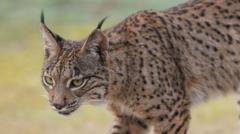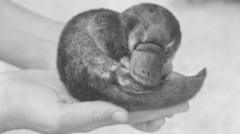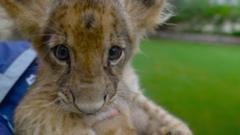With over 2,000 Iberian lynxes now thriving in the wild, conservation teams are hopeful of achieving a stable population by 2035, despite ongoing challenges like habitat loss and road fatalities.
Resurgence of the Iberian Lynx: A Conservation Triumph

Resurgence of the Iberian Lynx: A Conservation Triumph
Once on the brink of extinction, the Iberian lynx is making a slow but steady comeback thanks to dedicated conservation efforts across Spain and Portugal.
Saving a species: The slow return of the Iberian lynx
Navarro, the male lynx, was captured on camera as he moves confidently in search of a mate, embodying the cautious recovery of the elusive Iberian lynx. Once teetering on the edge of extinction, with fewer than 100 individuals remaining in isolated populations, the species has undergone significant recovery, boasting over 2,000 individuals across Spain and Portugal today. "Two decades ago, seeing an Iberian lynx in the wild was virtually impossible," states Rodrigo Serra, who oversees the region's extensive breeding program.
The steep decline of these magnificent creatures can largely be attributed to habitat destruction due to agricultural expansion, road traffic, and a devastating loss of their primary food source—wild rabbits—due to two pandemics that wiped out 95% of their population. By 2005, the Iberian lynx had disappeared from Portugal, but that same year marked a turning point for conservation efforts in Spain, where the first litter was bred in captivity. This led to a concerted national plan in Portugal three years later, which was spurred by the establishment of a dedicated breeding center in Silves, Algarve.
Here, the Iberian lynxes are kept under continuous monitoring to ensure they adapt to life in the wild while simultaneously being paired for reproduction. Serra shares the delicate balance maintained during this process. "To prepare them for survival, we let their natural instincts guide them—and sometimes that involves inducing a healthy dose of fear so they learn to avoid humans," he explains. Through innovative feeding mechanisms, carers prevent the animals from associating people with food, a crucial element of their training.
Once deemed ready, lynxes are released based on genetic criteria to minimize risks of inbreeding. Pedro Sarmento, who has dedicated 30 years to Iberian lynx research, highlights the distinctive traits of the species: “Their small heads and large paws provide exceptional jumping ability.” Despite the successes of the breeding initiative, challenges remain, especially with local landowners. As lynxes venture into private territories, concerns about livestock predation arise.
Sarmento recalls Lítio, a lynx who went missing after being released but eventually returned to the stronghold of his origin, Doñana National Park. Following consecutive releases, Lítio found a mate and has since fathered numerous cubs. The success story of Lítio exemplifies the potential for these animals to repopulate their historical territories.
Now, three decades after the establishment of targeted conservation strategies, the Iberian lynx is no longer classified as endangered. Sarmento aims for a stable population of 5,000 to 6,000 by 2035. Despite remaining issues, including a high road fatality rate, the team's efforts shine a hopeful light on the future of the Iberian lynx. "It's remarkable that we can now reliably capture glimpses of these beautiful animals in their natural habitats," he concludes, measuring their success in every sighting.
Navarro, the male lynx, was captured on camera as he moves confidently in search of a mate, embodying the cautious recovery of the elusive Iberian lynx. Once teetering on the edge of extinction, with fewer than 100 individuals remaining in isolated populations, the species has undergone significant recovery, boasting over 2,000 individuals across Spain and Portugal today. "Two decades ago, seeing an Iberian lynx in the wild was virtually impossible," states Rodrigo Serra, who oversees the region's extensive breeding program.
The steep decline of these magnificent creatures can largely be attributed to habitat destruction due to agricultural expansion, road traffic, and a devastating loss of their primary food source—wild rabbits—due to two pandemics that wiped out 95% of their population. By 2005, the Iberian lynx had disappeared from Portugal, but that same year marked a turning point for conservation efforts in Spain, where the first litter was bred in captivity. This led to a concerted national plan in Portugal three years later, which was spurred by the establishment of a dedicated breeding center in Silves, Algarve.
Here, the Iberian lynxes are kept under continuous monitoring to ensure they adapt to life in the wild while simultaneously being paired for reproduction. Serra shares the delicate balance maintained during this process. "To prepare them for survival, we let their natural instincts guide them—and sometimes that involves inducing a healthy dose of fear so they learn to avoid humans," he explains. Through innovative feeding mechanisms, carers prevent the animals from associating people with food, a crucial element of their training.
Once deemed ready, lynxes are released based on genetic criteria to minimize risks of inbreeding. Pedro Sarmento, who has dedicated 30 years to Iberian lynx research, highlights the distinctive traits of the species: “Their small heads and large paws provide exceptional jumping ability.” Despite the successes of the breeding initiative, challenges remain, especially with local landowners. As lynxes venture into private territories, concerns about livestock predation arise.
Sarmento recalls Lítio, a lynx who went missing after being released but eventually returned to the stronghold of his origin, Doñana National Park. Following consecutive releases, Lítio found a mate and has since fathered numerous cubs. The success story of Lítio exemplifies the potential for these animals to repopulate their historical territories.
Now, three decades after the establishment of targeted conservation strategies, the Iberian lynx is no longer classified as endangered. Sarmento aims for a stable population of 5,000 to 6,000 by 2035. Despite remaining issues, including a high road fatality rate, the team's efforts shine a hopeful light on the future of the Iberian lynx. "It's remarkable that we can now reliably capture glimpses of these beautiful animals in their natural habitats," he concludes, measuring their success in every sighting.





















